Visit of the Kitano Tenmangu Shrine in Kobe
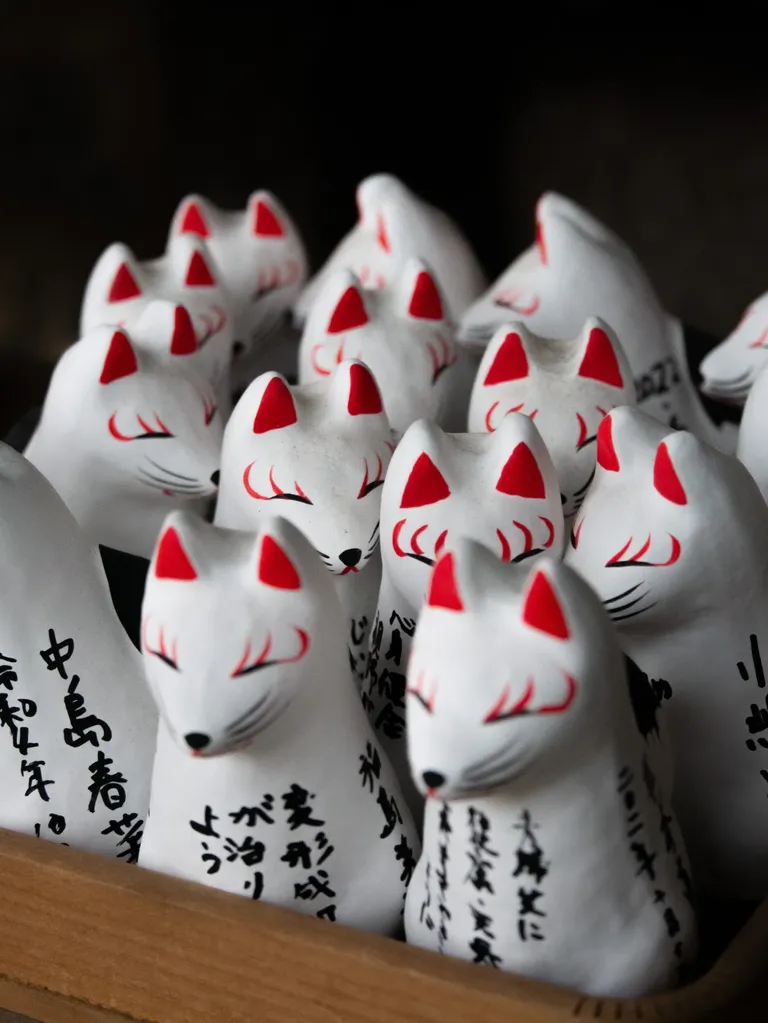
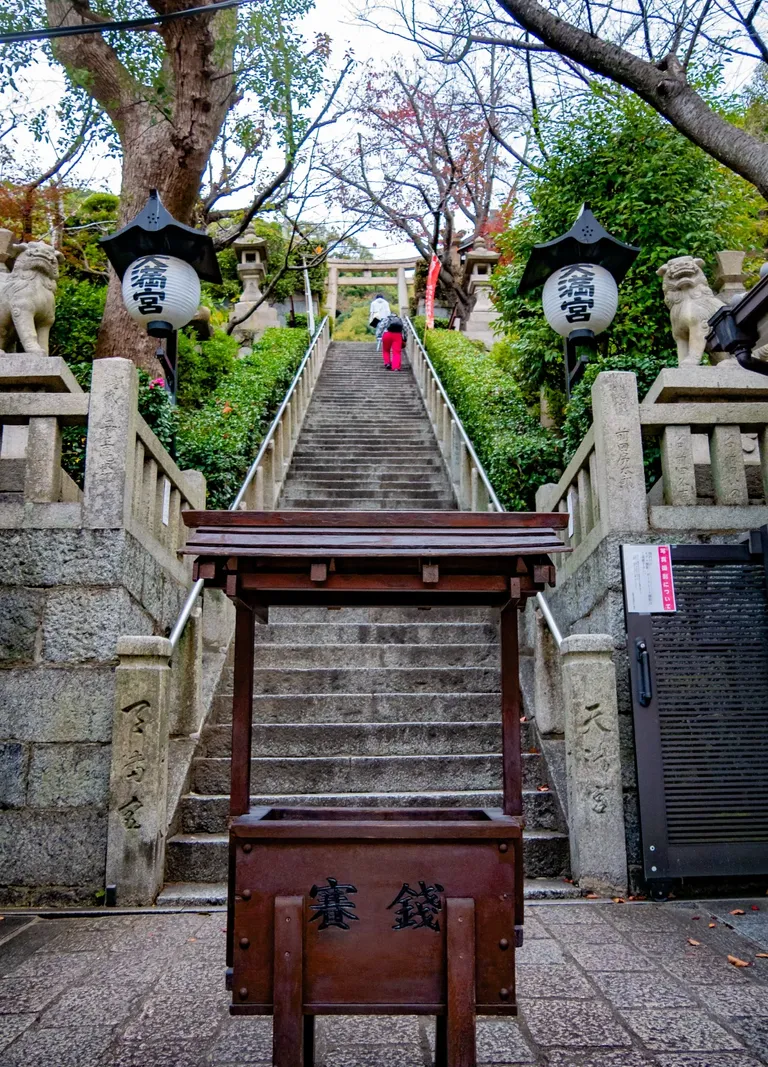
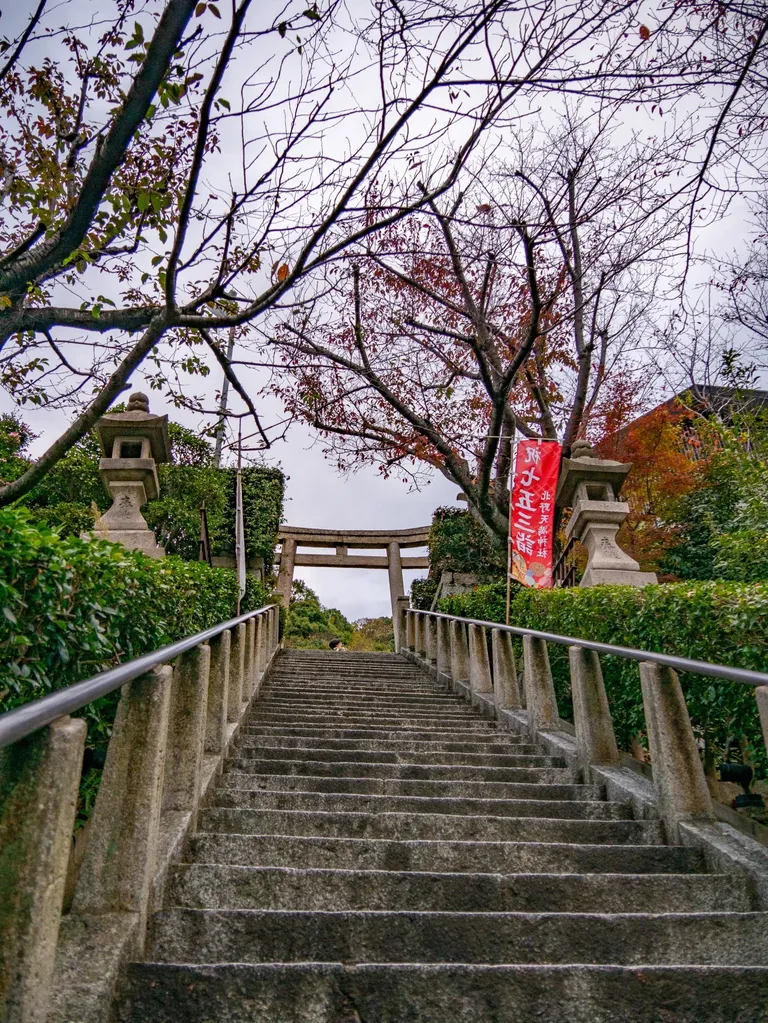

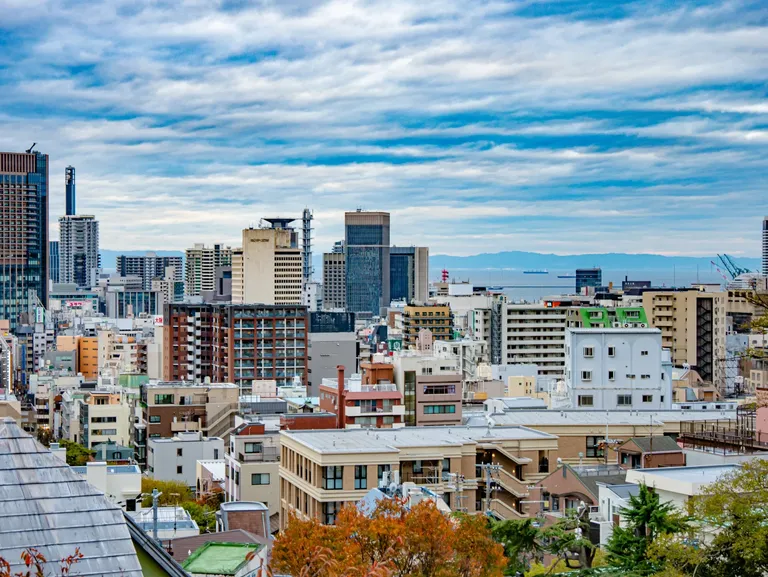
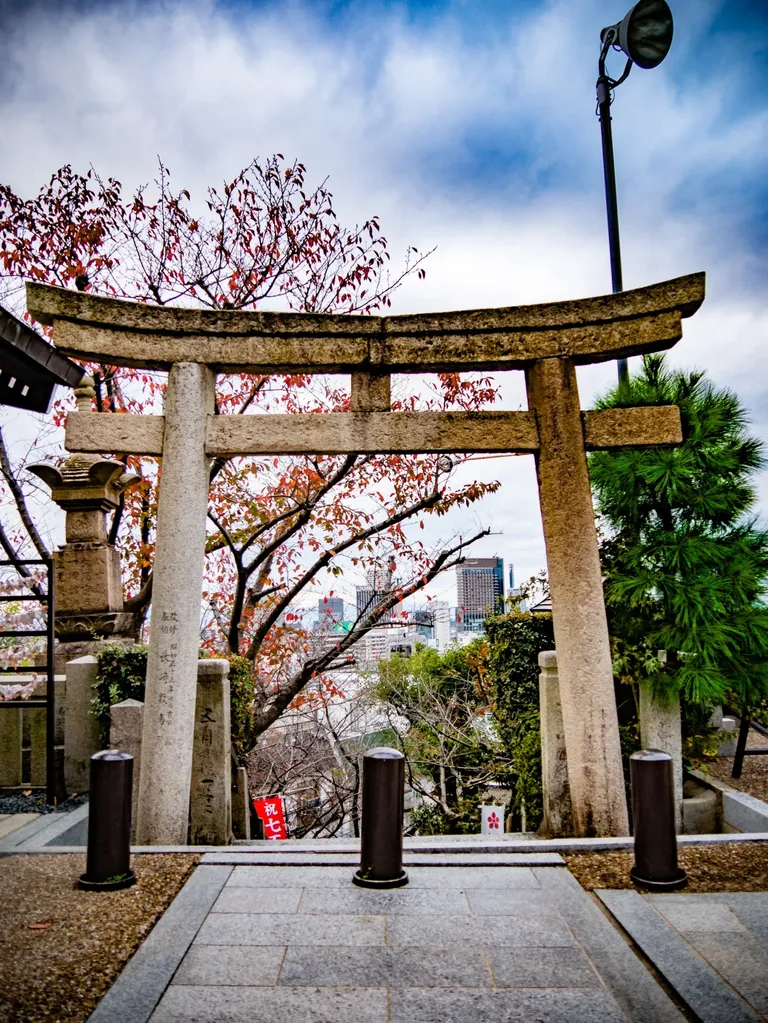

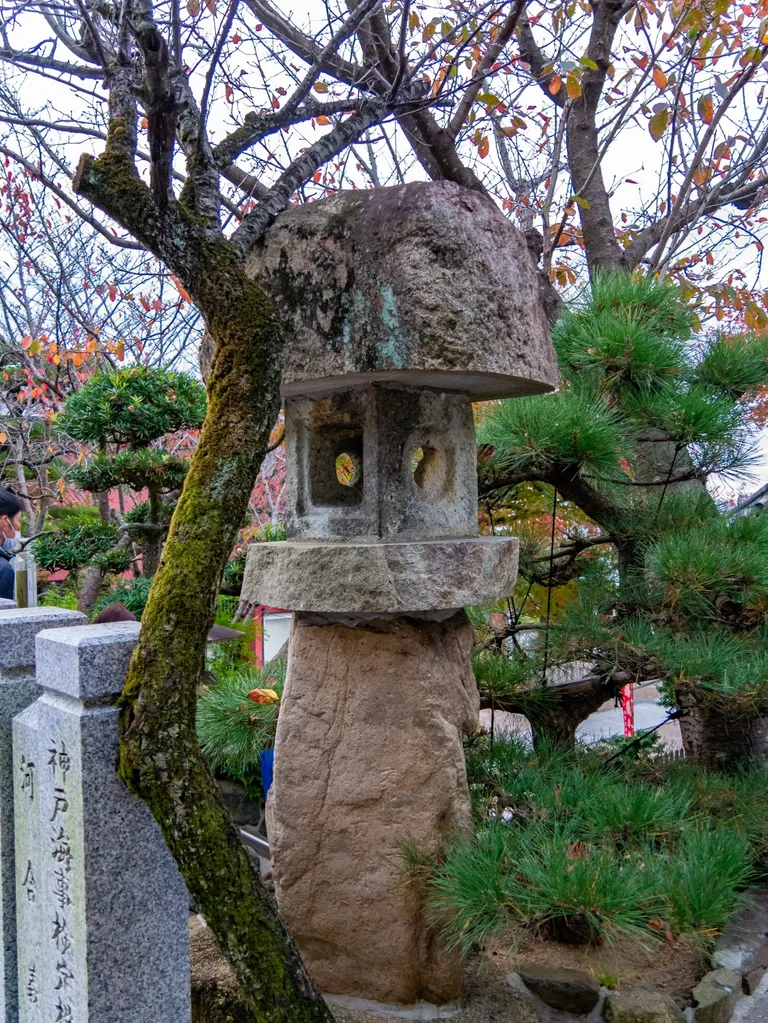

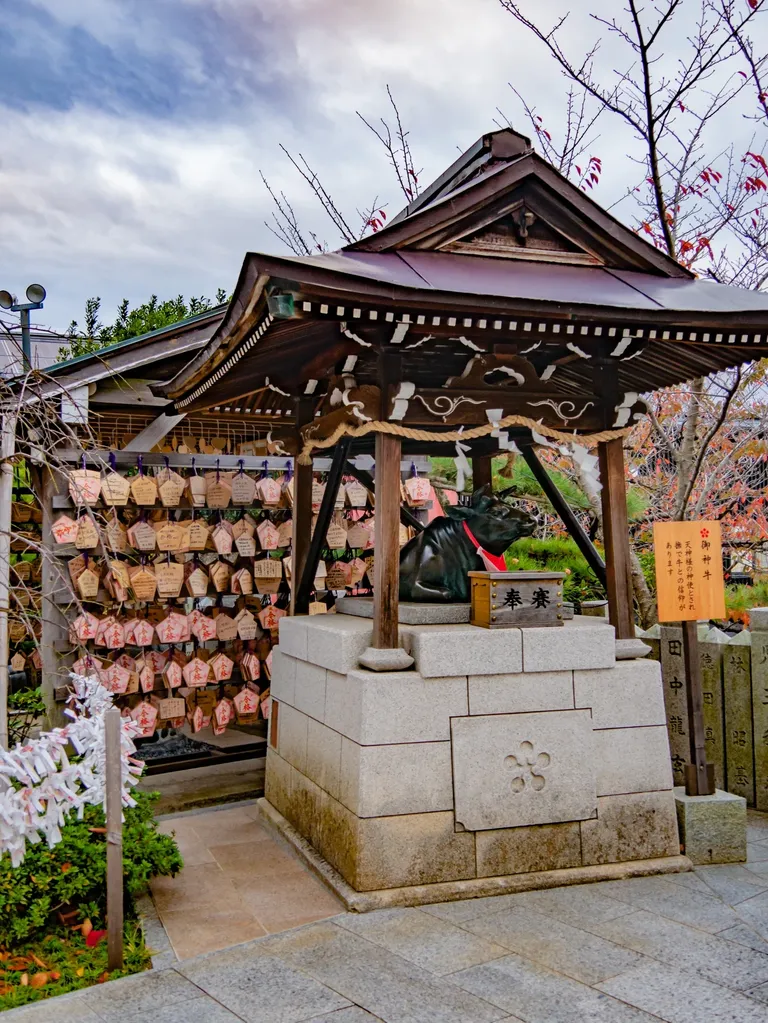
Hello everyone,
A few days ago, I told you about our little visit to Kobe in the Kitano Ijikan-Gai district. In this area, some European and American merchants settled at the beginning of the 20th century, bringing with them the style of houses from their respective countries. So it is an area with a very unusual visual aspect in Japan. And in the same place, there is the Kitano Tenmangu Shrine.
This is a Shinto shrine, and therefore it is "typically Japanese" by definition! This adds another layer to the incredible mix of architectural styles and culture in the area.
This Kitano Tenmangu shrine is actually a "branch" of the main Kitano Tenmangu shrine located in Kyoto. The history of the main shrine is quite funny. Indeed, it was presumably built around the middle of the 10th century to appease the spirit of a politician named Sugawara no Michizane. He was condemned to exile after a plot fomented by the powerful Fujiwara clan. The vengeful spirit of the condemned man would have returned to Kyoto to haunt the place and its inhabitants.
Towards the end of the 10th century, Sugawara no Michizane was deified under the name of Tenjin, the deity of letters and arts. The temple was even among the few dozen temples honored by the family of the emperor himself, and so the cult spread throughout the country, and other shrines were built, including the one in Kobe.
The Kitano Tenmangu of Kobe was built towards the end of the 12th century and is located at the top of the hill in the Ijikan-Gai district. When you come from downtown, it is the final point of the visit to the district. As the temple of Tenjin, the protector of letters and arts, students from Kobe come here to pray for their academic success. There are even protective amulets in the shape of schoolboy backpacks! However, the shrine is also known for its large fountain in the shape of Koi carp. It turns out that koi is also one of the pronunciations of the character for love in Japanese, and it is said that women come here to pray for everything related to couple and love.
Finally, being at the top of the hill, the shrine offers a breathtaking view of the city and the sea, so I leave you with these few pictures!
Thanks for reading to the end, and as always, don't hesitate to leave a comment!
Version Fr :
Bonjour à tous,
Il y a quelques jours, je vous ai parlé de notre petite visite à Kobé dans le quartier de Kitano Ijikan-gai. C'était à cet endroit que s'étaient établis quelques marchants européens et américains au début du 20e siècle, en important avec eux le style des maisons de leur pays respectif. C'est donc une zone avec un aspect visuel très inhabituel au Japon, et au même endroit, il y a le sanctuaire Kitano Tenmangu.
C'est un sanctuaire Shinto et donc il est "typiquement Japonais" par définition ! Cela ajoute une couche supplémentaire au mélange incroyable des styles architecturaux et de culture du quartier.
Ce sanctuaire Kitano Tenmangu est en fait une "antenne" du Kitano Tenmangu principal qui se situe à Kyoto. L'histoire du sanctuaire principal est assez amusante, en effet, il aurait été construit vers le milieu du 10e siècle pour apaiser l'esprit d'un homme politique Sugawara no Michizane qui aurait été condamné à l'exil après un complot fomenté par le puissant clan Fujiwara. L'esprit vengeur du condamné serait revenu à Kyoto pour hanter les lieux et ses habitants. Vers la fin du 10e siècle, Sugawara no Michizane a été déifié sous le nom de Tenjin, divinité des lettres et des arts. Le temple a même compté parmi la petite dizaine de temples honorés par la famille de l'empereur en personne et donc le culte s'est répandu à travers le pays et d'autres sanctuaires ont été construits, dont celui de Kobé.
Le Kitano Tenmangu de Kobé aurait été construit vers la fin du 12e siècle et se situe au sommet de la colline du quartier d'Ijikan-gai. Lorsque l'on arrive du centre-ville, c'est donc le point final de la visite du quartier. En tant que temple de Tenjin protecteur des lettres et des arts, les étudiants de Kobé viennent y prier pour leur réussite scolaire. Il y a même des amulettes de protection en forme de sac à dos d'écoliers ! Cependant, le sanctuaire est également connu pour sa grande fontaine en forme de carpe Koï. Il se trouve que koï est aussi l'une des prononciations du caractère pour amour en japonais et on raconte que les femmes viennent y prier pour tout ce qui à trait au couple et à l'amour.
Pour finir, en étant au sommet de la colline, le sanctuaire offre une vue imprenable sur la ville et la mer, je vous laisse donc avec ces quelques photos !
Merci d’avoir lu jusqu’au bout et comme toujours, n’hésitez pas à laisser un commentaire !
For the best experience view this post on Liketu
Hi there, @emeraldtiger. 😃 Thanks for sharing the history of Kitano Tenmangu shrine with us. It has quite a history. It's the architectural structure that fascinates me more. Cool pictures. 😊😊
Thanks a lot!
Yes this shrine as a long and interesting history!
If you want more pictures and stories about Japanese Shinto Shrines and Buddhist temples, you can check my profile as I regularly publish about these 😉
https://twitter.com/1475819111271870469/status/1596549929941581826
The rewards earned on this comment will go directly to the people( @ladytitan ) sharing the post on Twitter as long as they are registered with @poshtoken. Sign up at https://hiveposh.com.